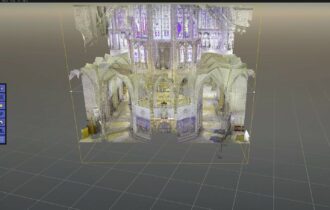
Augmented Reality in Education: New ways of understanding teaching
We have already spoken on numerous occasions about the versatility that augmented reality brings to different sectors. Adopting this technology represents endless possibilities for innovation, and education is one of the most benefited.
Teachers can improve learning outcomes through augmented reality through greater engagement and interactivity. But this is just the tip of the iceberg, as the benefits are innumerable. We’ll tell you how!
Augmented Reality in education
The implementation of augmented reality in education is gaining popularity in different schools worldwide. Why? Because it enhances learning skills such as problem-solving, collaboration, and preparing students for the future.
Moreover, this technology has only just begun to take off, making it more affordable for all types of schools and pockets. In fact, it is estimated that by 2023, there will be 2.4 billion mobile AR users worldwide. If we assume that there were only 200 million in 2015, the growth volume is enormous. But it goes far beyond the numbers; the most important thing is its multiple educational and learning applications.
Augmented reality benefits in education
The features provided by AR, such as the fluidity of digital objects within the physical world, encourage interactivity and engagement, especially at a time when it is increasingly difficult to retain students’ attention.
This technology maximizes learners’ ability to acquire more practical knowledge, and the time spent learning to use this new tool is minimized. Three-dimensional teaching methods are offered, in addition to appealing to emotion so that knowledge is remembered longer.
Some examples of the most important benefits are:
- A fast and effective learning system: AR converts traditional content into an immersive experience in which technology involves students in the subject matter being taught.
- Practical learning: Being able to feel, touch, and transform the subject being taught makes the contents can be transformed into much more practical education, away from traditional note-taking.
- Multi-format learning materials: AR can replace textbooks or printed photocopies, which reduces material costs and allows teaching to be done anywhere, anytime.
- More engaging teaching: Gamification of the education system makes students’ attitudes towards learning much more positive and receptive. Classes become more enjoyable, and students feel more involved.
- Improved comprehension: The technology allows teachers to create educational experiences customized to the needs of their students, ensuring that they have a much better understanding of the curriculum.
- Sensory development: AR allows students to benefit from immersive content where they are the protagonists of an experiential learning style where they engage in physical experiences rather than just watching a demonstration.
- Collaboration: When encountering digital content, it is much easier to share, allowing both parties to refine the content continually. This is also reflected in the higher motivation of the learners as they feel that they are active in creating the educational content.
Augmented Reality Apps for Education
The future of education involves making technological teaching applications that give a new meaning to teaching and the relationship between teacher and student.
An example is the SIGNARE Project, an app that we have developed for the CEU Cardenal Herrera University and whose objective is to rescue the essence of learning between teacher and student, implementing the latest Augmented Reality technology.
The project has been developed with a focus on fleeing from industrial education and exciting students who come daily to the classroom. It has been implemented in the training itinerary of the degrees of architecture and industrial design, but its scalability is exponential and extrapolated to many other degrees.
The key has been an application based on Evergine, which allows students to feel the figures they have designed, see them in actual size or even enter them. They only need to put on the HoloLens 2, extend their hand where they will see the menu, and interact with the environment without any complexity.
One of the critical features of the app is that both the teacher and the student visualize the model in real-time and to scale, allowing them to make changes and corrections as they see fit and involving the rest of their classmates. This provides a totally immersive experience, unlike working in front of a two-dimensional screen, where not all the nuances are perceived, and the experience is not as accurate.
This app is something that both teachers and students demand. It will distinguish between centers anchored in traditional teaching and those that opt for a more practical model driven by technology.
The education market is one of the most promising areas of development for augmented reality so that, ironically, it is back to teaching closer to the past, but with a completely diverse outlook for the future. Want to know more about how Evergine can help in this sector? Contact us!


